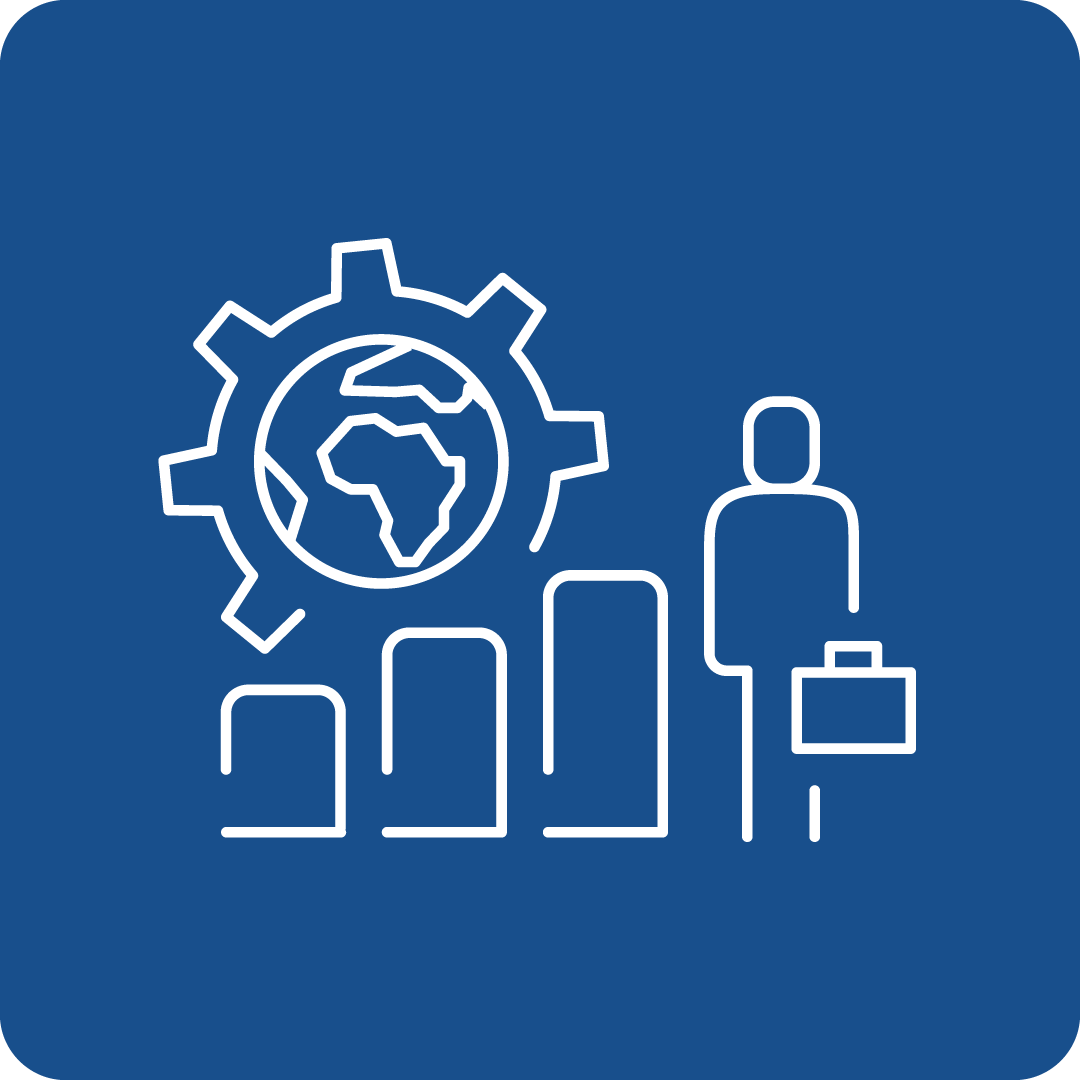Filter Search for grants
Call Navigation
Deadline expired
The deadline for this call has expired.
Call key data
Interreg Estonia-Latvia: 3rd call for proposals
Funding Program
Interreg Estonia-Latvia
deadlines
Opening
02.09.2024
Deadline
05.12.2024 14:00
Funding rate
80%
Call budget
€ 19,886,711.00
Link to the call
Call content
short description
Call objectives
The following priorities and specific objectives were developed as part of the program:
- P1: More cooperating cross-border regions and development of joint services
- SO 1.1: Enhance efficient public administration by promoting legal and administrative cooperation and cooperation between citizens, civil society actors and institutions, in particular with a view to resolving legal and other obstacles in border regions
- SO 1.2: Build up mutual trust, in particular by encouraging people-to-people actions
- P2: Jointly and smartly growing businesses
- SO 2.1: Enhancing sustainable growth and competitiveness of SMEs and job creation in SMEs, including by productive investments
- P3: Sustainable and resilient programme area
- SO 3.1: Enhancing protection and preservation of nature, biodiversity, and green infrastructure, including in urban areas, and reducing all forms of pollution
read more
Expected results
The program proposes the following (non-exhaustive list) measures:
P1: More cooperating cross-border regions and development of joint services
- SO 1.1: Enhance efficient public administration by promoting legal and administrative cooperation and cooperation between citizens, civil society actors and institutions, in particular with a view to resolving legal and other obstacles in border regions
- Enhancing the adaption and provision of joint public services through pilot actions that tackle border area obstacles.
- Encouraging the collection and transformation of regional data into (joint) new services.
- Encouraging the regional and local municipality level cross-border cooperation actions through cross-border networks, strategies and pilot actions.
- Pilot actions and implemented solutions for setting up public services.
- Implementing solutions for development needs other than services.
- Compiling cross-border strategies and/or actions plans followed by joint implementation actions.
- SO 1.2: Build up mutual trust, in particular by encouraging people-to-people actions
- Joint education, training and exchange activities.
- Experience exchange trips and events for municipal and NGO staff.
- Improvement of services in border regions, and capacity building for relevant organisations.
- Skills transfer between communities to promote employment.
- Activities aiming at conservation, preservation and adaptation or development of cultural traditions, heritage, cultural events, meetings, etc.
- Joint sports games; training camps, experience exchange of trainers.
P2: Jointly and smartly growing businesses
- SO 2.1: Enhancing sustainable growth and competitiveness of SMEs and job creation in SMEs, including by productive investments
- Clustering, networking, mentoring and practical (joint) training activities for raising the capacity of SMEs to introduce innovation in product development. Implementing the gained knowledge.
- Joint innovation and development in product/service development/improvement (including studies, existing research-based development process, prototyping).
- Joint marketing to reach new export markets, including market research, attending trade fairs etc.
- Development of cross-border cluster cooperation.
- Joint activities for technology and/or green transfer and introducing innovation in SMEs.
- Collaboration and experience exchange in science-industry technology transfer and joint R&D, mapping scientific services and equipment available for companies in Latvia and Estonia, promotion of cross-border knowledge and technology transfer activities.
- Finding and implementing joint digitalization solutions, e.g., taking up new software, data digitation, digital technologies, AI, automation, robotics etc.
P3: Sustainable and resilient programme area
- SO 3.1: Enhancing protection and preservation of nature, biodiversity, and green infrastructure, including in urban areas, and reducing all forms of pollution
- Actions aimed at safeguarding, maintaining and restoring of ecosystems and protection and preservation of cross-border biodiversity and key species.
- Data gathering and data-driven biodiversity monitoring, analysing methods of collecting data, designing, adapting methods.
- Testing in field the best measures for protection and restoration of biotopes in bad status.
- Restoration and management of species and habitats, including re-introduction of species (for example freshwater pearlmussel), and taking into account implementation of Prioritized Action Framework (PAF).
- Tackling invasive alien species including promoting common practices between Estonia and Latvia and increased public awareness.
- Establishment of innovative measures for collecting biomass from semi-natural grasslands, residue of forestry, agriculture (for energy, composting, soil structure improvement, secondary products, etc).
- Small-scale pilot actions in urban areas for preserving biodiversity.
- Innovative and best practice measures to increase pollinator and other native animal species richness in urban areas (biodiversity friendly grass management; insect hotels; hedgehog, bat and bird friendly gardens; ponds), raising awareness about nature-friendly urban green areas.
- Joint actions for tackling the cross-border challenges in the programme area such as pollution in shared water bodies; research on and management cross-border green networks; developing nature objects for recreational purposes and sustainable nature tourism; consideration of biodiversity at different levels of planning; development and implementation of solutions for new infrastructure (animal tunnels, pass ways) to avoid fragmentation of animal populations.
- development and implementation of nature-friendly approaches to manage the sides of roads and railways; creating new buffer zones and managing landscape elements important for species and habitats.
read more
Eligibility Criteria
Regions / countries for funding
eligible entities
Education and training institution, International organization, Non-Profit Organisation (NPO) / Non-Governmental Organisation (NGO), Other, Private institution, incl. private company (private for profit), Public Body (national, regional and local; incl. EGTCs), Research Institution incl. University, Small and medium-sized enterprise (SME)
Mandatory partnership
Yes
Project Partnership
Projects must involve at least one Estonian and one Latvian partner, who are legally registered in Estonia and Latvia and whose activities in the project are for the benefit of the programme area. In case of private enterprises, the owners of the companies in Estonia and Latvia cannot be the same, nor can they be owned by their close relatives and/or family members. Once the project is approved, all project partners must sign partnership agreement.Each project has to appoint a Lead Partner (LP).
To be eligible, projects are requested to fulfil four cooperation criteria:
- Joint development: The projects have to be developed, written and planned jointly by the partners from both sides of the border.
- Joint financing: All partners have to contribute to the project financially, which is confirmed by a co-financing statement attached to the application form.
- Joint implementation: The project has to follow the principles of joint implementation opposed to two parallel actions on either side of the border in order to achieve mutual benefits from the cooperation. The activities, the outputs and results are jointly realised by the partners.
- Joint staffing: Project team carrying out the project has to involve members from both Estonia and Latvia. All partners assume the necessary role to coordinate and take part of the responsibility.
other eligibility criteria
The programme area includes the following regions:
- Estonia: Lõuna-Eesti (South Estonia), Lääne-Eesti (West Estonia).
- Latvia: Kurzeme, Pierīga, Rīga, Vidzeme.
The minimum grant size is not fixed. Co-financing from the Programme can be up to 80% of the total eligible costs for all types of partners.
The maximum grant size depends on the specific objective:
- SO 1.1: Enhance efficient public administration by promoting legal and administrative cooperation and cooperation between citizens, civil society actors and institutions, in particular with a view to resolving legal and other obstacles in border regions: € 300,000.00
- SO 1.2: Build up mutual trust, in particular by encouraging people-to-people actions: € 70,000.00
- SO 2.1: Enhancing sustainable growth and competitiveness of SMEs and job creation in SMEs, including by productive investments: € 500,000.00
- SO 3.1: Enhancing protection and preservation of nature, biodiversity, and green infrastructure, including in urban areas, and reducing all forms of pollution: € 1,000,000.00
The maximum project duration is 36 months. The eligible period of the projects activities and payments ends on 31 December 2028. It is recommended to reserve up to 2 months in the end of the project for compiling reports and all other project activities should be finalised by that time.
Additional information
Topics
Relevance for EU Macro-Region
EUSBSR - EU Strategy for the Baltic Sea Region
UN Sustainable Development Goals (UN-SDGs)
![]()
![]()
![]()
![]()
![]()
![]()
![]()
project duration
36 months
Additional Information
The individual consultation with the JS on the potential project idea is compulsory for the applicant, i.e., representative(s) of the lead applicant’s organisation. The communication between the applicant and the JS qualifies as a compulsory consultation if:
- The representative(s) of the LP’s organization are present – face to face or virtually.
- The eligibility and financial capacity of partners, project objective(s) and expected results, content, cross-cooperation principle, eligibility of the planned activities, planned budget and indicators is discussed.
Such consultations are needed for testing the compliance of the idea to the requirements of the Programme.
Application procedure consists of compulsory consultation and submission of application.
The guidance on how to create an account and start an application in Jems is provided at estlat.eu. The detailed instructions on the required information in different parts of application is provided in Jems.
The application form and all necessary documents listed in the technical eligibility criteria in chapter 6.3.1 of the call manual must be submitted electronically in Jems for technical eligibility and loose quality check. The Programme accepts only digital/electronic signature.
The following documents must be submitted together with the application form:
- Lead partner’s confirmation of the application form.
- Partners’ (including lead partner) co-financing statements.
- Declaration by Latvian partners (including lead partner) confirming that
- the project partner has repaid any EU or national support to be refunded by the deadline.
- the project partner or his legal representative has not been validly sentenced or penalized.
- Document from NGOs indicating their co-financing sources (for example, communication with banks, evidence of the income from services, letter of confirmation by the creditors/investors, including private parties and municipalities, etc.)
- The following documents must be submitted by the 3rd of January 2025: SME’s balance sheet and income statement as of t 31.12.2024
Call documents
Interreg Estonia-Latvia 3rd call for proposals ManualInterreg Estonia-Latvia 3rd call for proposals Manual(1315kB)
Contact
To see more information about this call, you can register for free here
or log in with an existing account.
Log in
Register now






